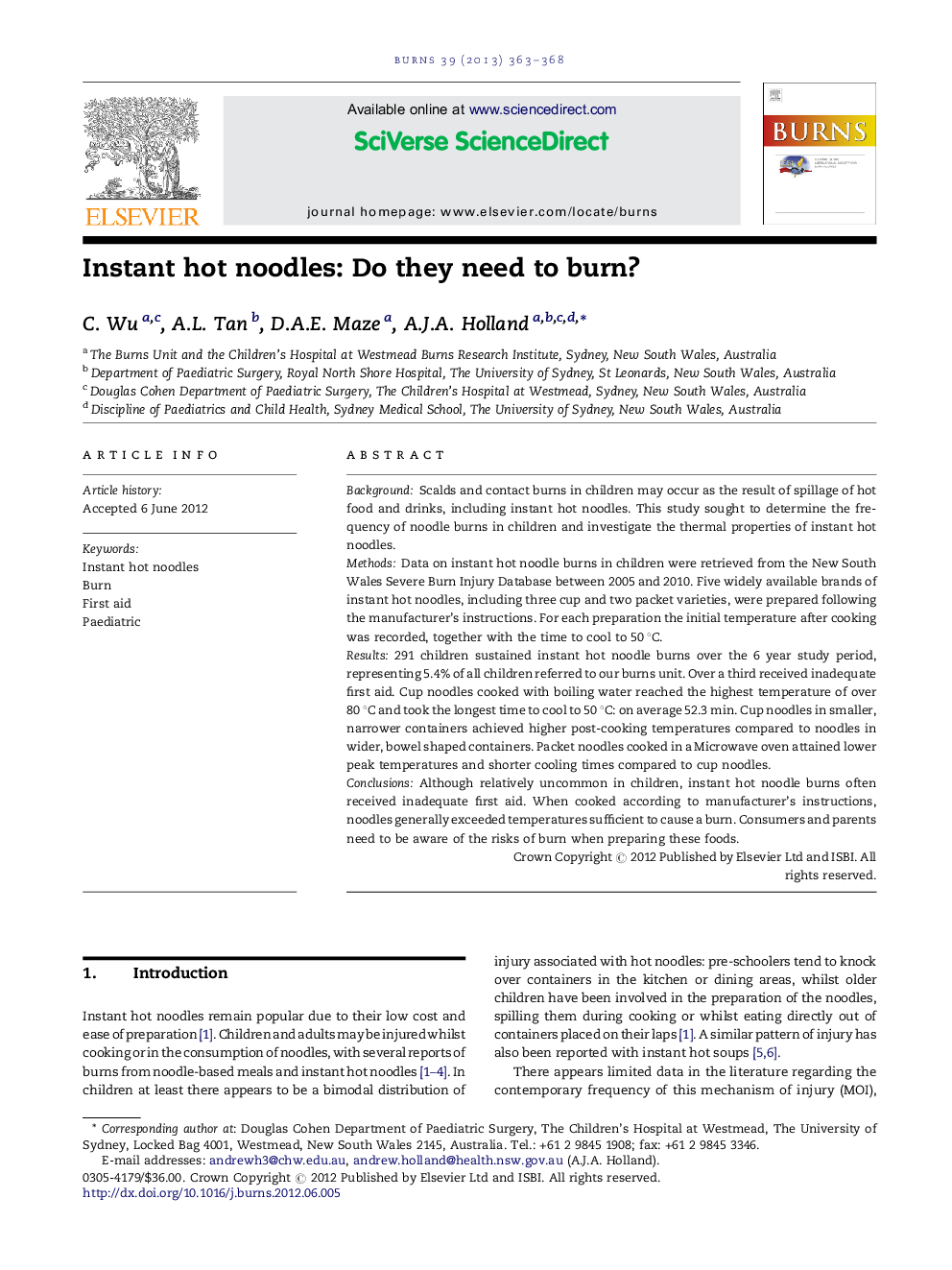| Article ID | Journal | Published Year | Pages | File Type |
|---|---|---|---|---|
| 3105109 | Burns | 2013 | 6 Pages |
BackgroundScalds and contact burns in children may occur as the result of spillage of hot food and drinks, including instant hot noodles. This study sought to determine the frequency of noodle burns in children and investigate the thermal properties of instant hot noodles.MethodsData on instant hot noodle burns in children were retrieved from the New South Wales Severe Burn Injury Database between 2005 and 2010. Five widely available brands of instant hot noodles, including three cup and two packet varieties, were prepared following the manufacturer's instructions. For each preparation the initial temperature after cooking was recorded, together with the time to cool to 50 °C.Results291 children sustained instant hot noodle burns over the 6 year study period, representing 5.4% of all children referred to our burns unit. Over a third received inadequate first aid. Cup noodles cooked with boiling water reached the highest temperature of over 80 °C and took the longest time to cool to 50 °C: on average 52.3 min. Cup noodles in smaller, narrower containers achieved higher post-cooking temperatures compared to noodles in wider, bowel shaped containers. Packet noodles cooked in a Microwave oven attained lower peak temperatures and shorter cooling times compared to cup noodles.ConclusionsAlthough relatively uncommon in children, instant hot noodle burns often received inadequate first aid. When cooked according to manufacturer's instructions, noodles generally exceeded temperatures sufficient to cause a burn. Consumers and parents need to be aware of the risks of burn when preparing these foods.
